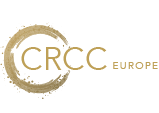Program

Policy Officer, DG for Internal Market, Industry, Entrepreneurship and SMEs, European Commission, Belgium
In January, the new Commission presented a roadmap aimed to increase competitiveness of the EU industry and boost the economic growth. In this context the presentation will explain the current state of reflection on the revision of the Cosmetic Products Regulation (CPR), the reasons behind the ‘switch’ from targeted revision to evaluation, the planned consultation process accompanied the evaluation and the areas on which the evaluation could focus. The update will also be provided on the ongoing regulatory actions resulting in changes to the CPR Annexes.

Director Technical Regulatory & International Affairs, Cosmetics Europe, Belgium
This presentation addresses the regulatory issues that were originally meant to be included under the Targeted Revision of the EU Cosmetics Regulation. Developments and changes in the regulatory landscape over the past three years, the new European Parliament and the Commission’s plans for sustainable prosperity and competitiveness, all make it very unlikely that the Targeted Revision will go ahead as originally planned. Instead, the Commission is expected to launch a comprehensive Evaluation/Fitness Check process for the Cosmetic Product Regulation which could lead to a much broader overhaul – but would also take significant time. However, the ‘hot topics’ identified previously will not be forgotten and pressure will remain on the Commission to address them as quickly as possible: Specific provisions on Endocrine Disruptors, the alignment of the nanomaterial definition with horizontal EU legislation, the future management of the Scientific Committee SCCS, digital labelling and the Lisbonisation of the Cosmetic Product Regulation. The presentation will review the current status on these issues and assess if/how they could be managed in the absence of a quick revision of the Cosmetic Products Regulation.

Scientific Affairs Manager, CTPA- Cosmetic, Toiletry and Perfumery Association, UK
This session will look at the latest and upcoming changes to chemicals management in the UK, which affect cosmetic ingredients, under GB CLP and UK REACH. This presentation will also explore the latest cosmetic ingredients restrictions under the UK Cosmetics Regulation, and how these are different from the outcomes in the EU. Francesca will also outline the activities that industry can collaborate with to support the UK management of chemicals, as well as the support available to companies to manage divergence in order to minimise impact to businesses.

Environmental Affairs Manager, CTPA, UK
The cosmetics industry is at the forefront of environmental scrutiny, with rising consumer demand for sustainable practices, and increasing regulatory requirements. This presentation will provide an overview of the key environmental regulations impacting cosmetic companies in the UK, with a particular focus on packaging, drawing comparisons with the EU.

Secretary-General, EFFCI – The European Federation for Cosmetic Ingredients, Belgium
Authorities in Europe and beyond are putting in place new sustainability rules and restrictions on chemicals that are certainly born out of good faith and a desire to care for the planet and the health of its sapiens species inhabitants. The real-life spillovers for both industry, market and consumer are all to be seen on the ground. Industry welcomes such initiatives and appreciates their noble purpose, at the same time to make their feasibility effective with a sustainable spillover into the real world that is reasonable in terms of technology, market and cost it wishes for a more structured ex-ante dialogue to be able to put on the scales concretenesses that if not taken into consideration undermine the opportunity for continuity and future for industry and consumers. Let’s look at some examples.

Vice-President, Technical & Regulatory Affairs, IBA, USA
Does a solid understanding of MoCRA mean your cosmetic products are compliant in the United States? MoCRA is just one piece of an increasingly complex compliance puzzle for cosmetics in the United States. State level legislative and regulatory activity has been proliferating at an increasing pace in recent years. This session will explore state level enacted laws and regulations beauty businesses need to understand for U.S. compliance, as well as proposed legislation trends industry should monitor in the new legislative session. This session will also discuss how key leadership changes at the U.S. Food & Drug Administration and the overarching federal political environment may impact the legislative and regulatory outlook for the beauty industry in 2025 and beyond.

Senior Consultant, TSG Consulting, Spain/UK
Labelling of cosmetic products is subject to specific legal requirements in the EU, the UK, Canada and the US. The presentation will provide some highlights on the general requirements for each jurisdiction. In the current global market, where products are sold worldwide, cost-effective solutions are sought, which may include the use of a single label design that covers all geographies. The feasibility of this approach will be assessed.

Director General at The International Natural and Organic Cosmetic Association - NATRUE, Belgium
Regulator interest concerning methods to combat greenwashing are not limited to the EU. Additionally, environmental and product claims, including natural or organic, remain an import factor for consumers orientation and choice when it comes to sustainability. Building on what is happening outside the EU, NATRUE will provide an overview of notable global examples where harmonised criteria and third-party certification are being used to substantiate sustainability-linked characteristics and support cosmetic product claims.

Regulatory Affairs Manager, Cosmed – The French Cosmetics Association for SMEs, France

CEO and Founder Helioscience, France

Senior Inspector – Chemical Product Safety Project Lead, Netherlands Food and Consumer Product Safety Authority (NVWA)
Have you ever dealt with an enforcement authority and felt like they did not understand your situation? The complexity of getting reliable test results, pressure from the press and constantly changing legislation? Of course as the competent authority, we sometimes cannot avoid being the bringer of bad news. However, behind the scenes, we deal with many of the same challenges. In this presentation, we would like to give you some insight in howe we as a competent authority deal with these issues by reflecting on our recent sunscreen project. We would also like to share with you the vision of the NVWA when it comes to market surveillance; we aim to empower companies that prioritize the safety and wellbeing of their consumers, so we can focus our enforcement actions on those companies that don’t. After all, are happy and healthy consumers not our biggest common goal?

Vice-President, Technical & Regulatory Affairs, IBA, USA
Sunscreens are regulated as Over-the-Counter (OTC) Drugs in the United States, which can present manufacturing, labeling, and testing challenges for beauty brands used to the regulatory requirements for cosmetic products or sunscreen regulations for other countries. This session will provide a practical comparison between U.S. cosmetics and OTCs for key compliance activities such as product listing, facility registration (and fees!), labeling, testing, and more. Additionally, this session will touch on the projected future outlook of sunscreen regulation in the United States.

Regulatory Toxicologist, The Regulatory Company, Netherlands

Owner and Principal, Sun Protection Facilitator, Switzerland

Regulatory Affairs Manager, Cosmed – The French Cosmetics Association for SMEs, France

Senior Inspector – Chemical Product Safety Project Lead, Netherlands Food and Consumer Product Safety Authority (NVWA)

Vice-President, Technical & Regulatory Affairs, IBA, USA

Regulatory Toxicologist, The Regulatory Company, Netherlands

Owner and Principal, Sun Protection Facilitator, Switzerland

CEO, Axis Integrator, Romania
- The organization and planning of inspections (annual programs).
- Specific challenges with online sales inspections.
- Expectations of the authorities regarding compliance.
- Consequences and follow-up actions, with concrete examples.
- Some key statistics on inspections in Belgium.

Board Director of Obelis USA LLC, Adjunct Instructor at University of Cincinnati, Independent Consultant, USA

Policy Officer, European Commission DG ENV, Belgium
“Certifying environmental excellence: Opportunities and future perspectives of the EU Ecolabel for cosmetics products”
Consumers are increasingly looking for healthy and sustainable cosmetics. The EU Ecolabel is a means for businesses to enhance their innovation and competitiveness, while offering reliable eco-friendly alternatives to conventional cosmetics, and empowering consumers’ sustainable consumption choices.
The EU Ecolabel, the official European Union voluntary label for environmental excellence, has become the worldwide reference voluntary certification for green goods and services recognized for its rigorous standards/criteria and its contribution to promoting sustainability. In the case of cosmetics, EU Ecolabel criteria guarantee products with low toxicity to aquatic organisms, biodegradable ingredients, restricted use of hazardous substances, minimized and easy-to-recycle packaging, renewable ingredients of sustainable origin and good performance.
The EU Ecolabel encourages innovation and creates new market opportunities, also by being part of the sustainability programmes of big market players. It helps businesses stand out, gain visibility, and attract consumers who are increasingly focused on making sustainable choices.
Moreover, the EU Ecolabel helps unlocking Green Public Procurement opportunities, as the label complies with the requirements of the related EU law and can be used in procurement practices.
Finally, the EU Ecolabel is a safe investment and a simplification tool for companies as it means compliance with new and forthcoming EU legislation (Directive on Empowering Consumers for the Green Transition and Green Claims Directive Proposal) impacting sustainability labels and green claims.

Director of Regulatory Affairs, Nanotechnology Industries Association, Belgium
Nanomaterials are widely applied in cosmetics products and following the Cosmetic Regulation, those must be included in the annual report on the use of nanomaterials in cosmetics produced by the European Commission. This was implemented to allow monitoring of the current situation, ensuring the EU regulation is keeping pace with innovation, in particular regarding the potential of nanotechnologies. One first challenge while addressing the EU Cosmetic regulation regards the definition of nanomaterials. Despite a common recommendation for a definition adopted by the European Commission (EC Recommendation 2011/696/EU) and updated in 2022, several sectorial definitions currently coexist at the EU, causing discrepancies among sectors and along the value chains. To overcome this issue, the adoption of a cross sectorial definition has been proposed. This presentation will review the differences among the current EU recommendation of a nanomaterial definition, the current definition under the cosmetic sectors and the challenges and opportunities the cosmetic industry will face if the current EU recommendation is finally implemented in the cosmetic sector.

Lecturer of Pharmacy, Frederick University Nicosia, Cyprus
Nanotechnology has become a common technological field in the cosmetics industry, offering advanced formulations with enhanced efficacy and solubility, improved stability, and targeted delivery of active ingredients. However, the unique properties of nanomaterials—such as their nanoscale dimensions, increased surface area, and potential bioactivity—raise significant health, environmental, and ethical concerns.
The EU Cosmetics Regulation, with several updates and amendments, has introduced more and more specific definitions for nanoparticles as well as stricter requirements for the use of nanomaterials, focusing on comprehensive safety assessments, transparent labeling, and mandatory notification through the Cosmetic Products Notification Portal (CPNP). The regulation explicitly defines nanomaterials and mandates detailed risk assessments that consider their unique physicochemical properties and potential interaction with biological systems.
Despite these advancements, several challenges persist. The lack of standardized testing methods for nanoscale ingredients complicates compliance, while discrepancies between EU and non-EU regulatory frameworks hinder global harmonization. Furthermore, the long-term toxicity, and probable systemic toxicity, of certain nanomaterials call for continuous scientific and regulatory updates. On top, the EU Green Deal poses another dimension of challenge to nanomaterials.
The explicit definitions for nanomaterials allow for the choice of materials that do not fall into the regulation restrictions but may have very similar properties, especially for skin delivery of active substances. Such systems, as liposomes or nanoemulsions (that would be considered nanotechnological e.g. for the pharma regulations), can maintain the benefits of nanotechnology without the regulatory implications, due to their Generally Recognized As Safe and non bio-persistent nature.

Prof. Dr. Emerita, In Vitro Toxicology and Dermato-Cosmetology (IVTD) at Vrije Universiteit Brussel, Belgium
Next Generation Risk Assessment (NGRA) ab initio was applied to evaluate whether repeated exposure to 2.5% (w/w) HC Yellow No. 13 (HCY13) hair dye under non-oxidative conditions is safe. A physiologically based pharmacokinetic model for dermal exposure estimated internal liver concentrations (Cmax liver), ranging from 0.0024 to 0.36 µM. Multiple in silico tools consistently identified hepatotoxic alerts associated with HCY13, possibly attributed to its trifluoromethyl group, known to interfere with hepatic lipid metabolism and induce fat accumulation (steatosis). Targeted in vitro bioactivity tests guided by the Adverse Outcome Pathway network for liver steatosis were conducted. Human stem cell-derived hepatic cells were exposed to varying concentrations of HCY13 for 72 hours. The expression of 11 lipid metabolism-related marker genes (AhR, PPARα, LXRα, APOB, ACOX1, CPT1A, FASN, SCD1, DGAT2, CD36, and PPARγ) and triglyceride accumulation, the phenotypic hallmark of steatosis, were evaluated. Using PROAST software, in vitro Point of Departure (PoDNAM) values were determined for each biomarker. Given that all PODNAM values exceeded the predicted Cmax liver values, it is expected that 2.5% (w/w) HCY13 would not trigger liver steatosis under the assumed conditions of use. This study demonstrates the feasibility of using an animal-free NGRA approach to assess whether the use of HCY13 is protective for human health against steatosis, thereby supporting regulatory decision-making based on advanced humane scientific approaches.

Full Professor of Toxicology at the University of Milan, Italy
Laboratory of Toxicology, Department of Pharmacological and Biomolecular Sciences ‘Rodolfo Paoletti’, Università degli Studi di Milano, Milan, Italy
Immunotoxicity assessment has long relied on animal models, raising ethical concerns and questions about their relevance to human health. This lecture will highlight modern alternatives such as in vitro methods, human-based studies, adverse outcome pathways (AOPs), and computational modeling, which offer improved predictive accuracy and regulatory potential despite ongoing challenges. Case studies, including AOP-based skin sensitization assessments and whole blood cytokine pyrogen assays, showcase the success of non-animal methods. However, further research is needed in areas like respiratory sensitization, developmental immunotoxicology, and microphysiological systems. The presentation will conclude with recommendations to advance non-animal methods (NAMs), emphasizing AOP frameworks and urging their broader adoption to enhance safety assessment practices in the 21st century.

Safety Assessor, QACS Lab, Greece
On 27 July 2023, the European Commission published Regulation (EC) 2023/1545 updating the labelling of allergens in cosmetics. In this presentation, we will provide a comprehensive overview of the key regulatory changes introduced by this new legislation and practical examples and best practices to facilitate the efficient implementation of these provisions by industry to ensure that their products comply with the new requirements.

Regulatory Affairs Manager at Critical Catalyst, Portugal

Managing Partner, Yuma, Belgium
Vincent will explore the most recent advancements in AI and their potential to address key challenges in regulatory processes. Through a journey from simple use cases to more sophisticated AI systems, he will map out the evolving AI landscape and share valuable lessons learned from real-world implementations.


